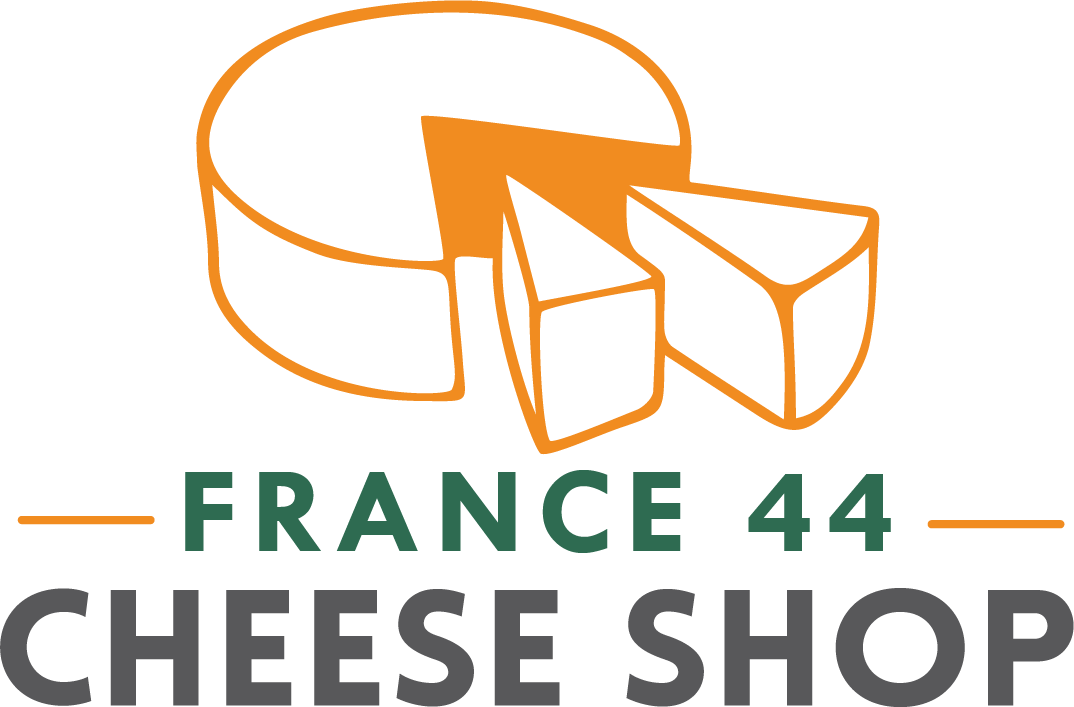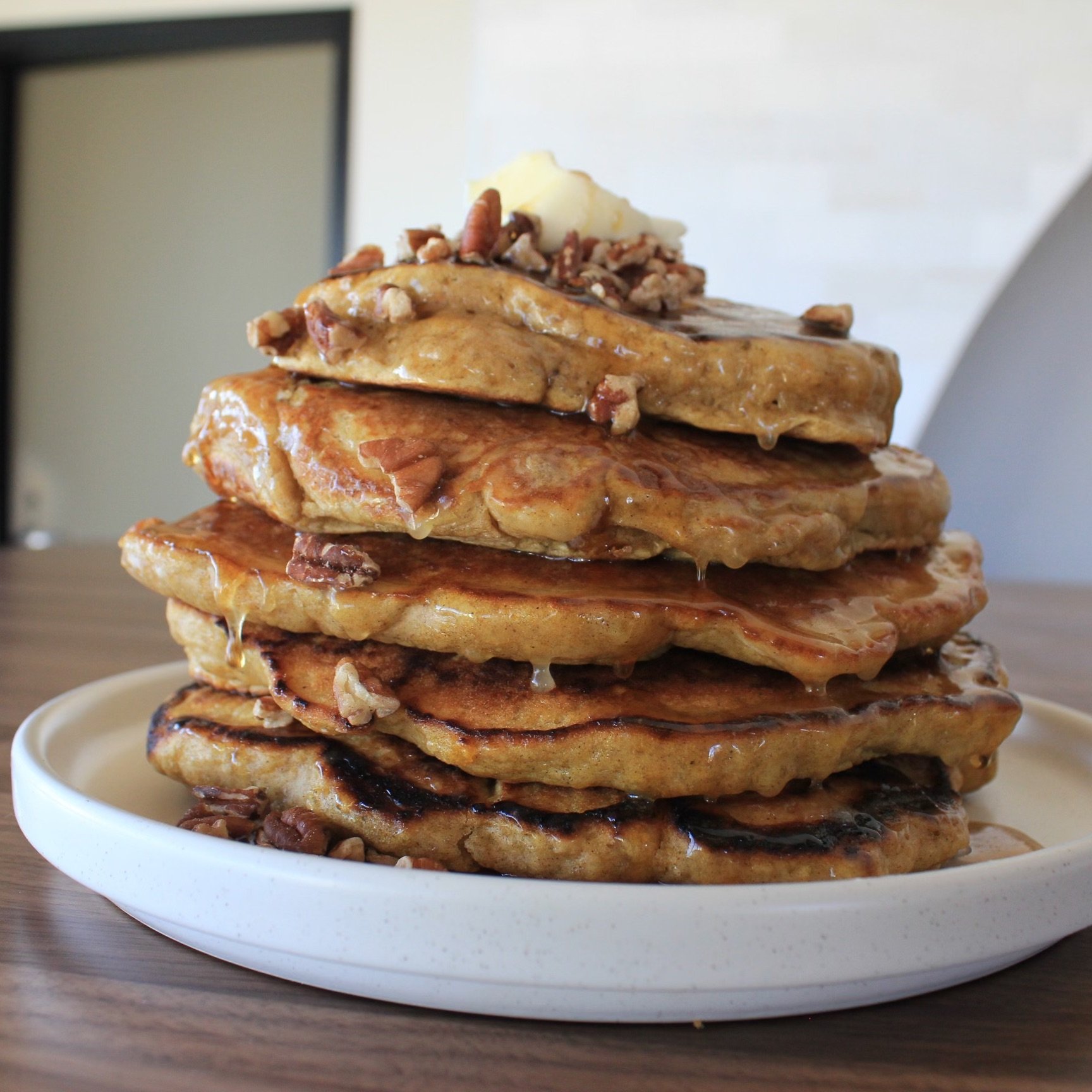Confession: I’ve never had a pumpkin spice latte. I wouldn’t call myself a “PSL” hater, it’s just never something that I’ve craved, despite being a huge squash and gourd fan. However, I would eat these pancakes every single weekend if I could. What a better way to use up your pumpkins from Halloween. (Yes, you can absolutely eat your Jack O’ Lanterns)
Fair warning, they’re pretty decadent. You could eat this for breakfast, brunch, dinner, and absolutely for dessert.
These pancakes get their substantial rise from the acid in the buttermilk interacting with the leavening agents; lightly beating the egg whites gives them the similar fluffiness you’d get from whipping whites, minus the elbow grease. Because the pumpkin adds extra moisture to the batter, it’s important to cook the pancakes low and slow so they can cook all the way through.
I topped mine with our house roasted pecans, one of the most delicious cultured butters, and my favorite maple syrup we sell from Runamok.
Batter Ingredients:
2 large eggs
1 1/2 cups buttermilk
2 1/2 cups AP flour
2 tsp. baking powder
3/4 tsp. baking soda
1 cup roasted pumpkin, squash, or organic roasted pumpkin puree
1/4 cup organic cane sugar
3 tablespoons melted unsalted butter
1 tsp. Vanilla extract
1 2” piece of fresh ginger, finely grated
2 1/2 tsp. Ground cinnamon
1 1/2 tsp. Kosher salt
Maple Butter/Garnish and Assembly:
1/2 cup ploughgate cultured butter, room temperature
4 tablespoons Runamok Maple Syrup (for whipped butter)
1 cup F44 Moroccan roasted pecans, roughly chopped
Maple syrup to garnish
Directions:
Separate yolks from eggs over a small bowl to catch egg whites. Place yolks in a large bowl. Add buttermilk, pumpkin puree, sugar, butter, ginger, and vanilla to egg yolks and mix with a rubber spatula to combine.
Whisk flour, cinnamon, baking powder, baking soda, and salt in a medium bowl to combine, then gently add to buttermilk mixture and mix until dry ingredients are mostly hydrated.
Briefly beat egg whites lightly with a fork, then add to batter and mix until completely incorporated. Let batter sit for 15 minutes.
Make your maple butter! While the batter is resting, heat softened butter in a microwave-safe bowl in microwave 10 seconds. The butter should be extremely soft but still pale yellow in color and not melted. Add 4 Tbsp. maple syrup 1 Tbsp. at a time, whisking vigorously after each addition to fully emulsify before adding more, about 2 minutes total.
Heat oil in a griddle or a non-stick pan. I used a 1/3 measuring cup, but you can really make these as big or small as you’d like. They are relatively dense, so low heat seemed to work better for me.
Top with your whipped maple butter, Runamok syrup, and pecans. Enjoy!





